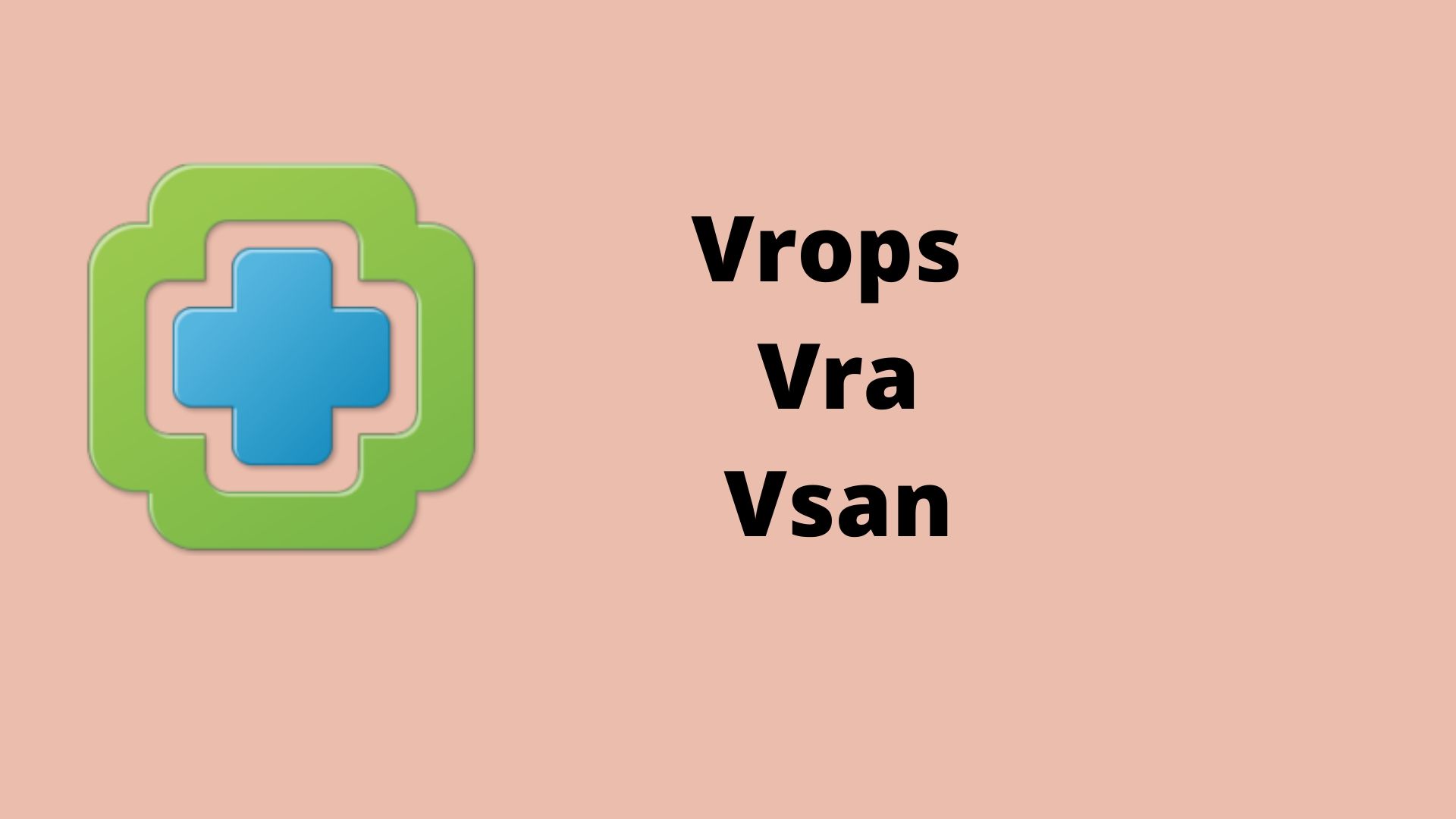
What is vSAN?
Virtual SAN is software-defined storage first introduced in vSphere 5.5 and is fully integrated with vSphere. It aggregates locally attached storage of ESXi hosts which are part of a cluster and creates a distributed shared solution.
What is cold migration?
To move a powered-off VM from one host to another is called cold migration.
What is Storage vMotion?
To move a powered-on VM from one datastore to another is called Storage vMotion.
What are the different configuration options for VSAN?
There are two configuration options for vSAN:
- Hybrid: Uses both flash-based and magnetic disks for storage. Flash are used for cashing, while magnetic disks are used for capacity or storage.
- All-Flash: Uses flash for both caching and for storage
Are there VSAN ready nodes are available in the market?
Yes, vSAN-ready such as VxRail 4.0 and 4.5 are available in the market. VxRail is the combination of min 3 servers which are part of a cluster and can scale up to 64 servers.
How minimum servers/hosts are required to configure vSAN?
To configure a vSAN, you should have a minimum 3 ESXi hosts/servers in the form of a vSAN cluster. If one of the servers fails, a vSAN cluster will fail.
How are many maximum ESXi hosts allowed for vSAN?
64 hosts are max allowed to configure a vSAN cluster.
How many disk groups and max magnetic disks are allowed in a single disk group?
Maximum 5 disk groups are allowed on an ESXi host which is a part of a vSAN cluster and a maximum of 7 magnetic and 1 SSD per disk group is allowed.

How many types of storage can we use in our virtual environment?
- Direct Attached Storage
- Fiber Channel (FC)
- iSCSI
- Network Attached Storage (NAS)
What is NFS?
Network File System (NFS) is a file sharing protocol that ESXi hosts use to communicate with a NAS device. NAS is a specialized storage device that connects to a network and can provide file access services to ESXi hosts.
What is Raw Device Mapping (RDM)?
Raw Device Mapping (RDM) is a file stored in a VMFS volume that acts as a proxy for a raw physical device. RDM enables you to store virtual machine data directly on a LUN. RDM is recommended when a VM must interact with a real disk on the SAN.
What is iSCSI storage?
An iSCSI SAN consists of an iSCSI storage system, which contains one or more storage processors. TCP/IP protocol is used to communicate between host and storage array. an iSCSI initiator is configured with the ESXi host. an iSCSI initiator can be a hardware-based either dependent or independent and software-based known as iSCSI software initiator.
What is the format of iSCSI addressing?
It uses TCP/IP to configure.
What are iSCSI naming conventions?
iSCSI names are formatted in two different ways:
- the iSCSI qualified name (IQN)
- extended unique identifier (EUI)
What are the components of vRA appliance?
Below are the list of components of vRA appliance.
- ViDM
- Reverse Proxy
- VRA Services
- VRealize Orchestrator
- Postgres Database
Explain the difference between IaaS Web Service and IaaS Manager Service.
IaaS Web Servers are Microsoft Windows servers that host model manager services for vRealize Automation. They provide access to the MSSQL database associated with vRealize Automation for the rest of the vRealize Automation services.
The IaaS Manager Servers helps in providing the overall coordination of events within VRealize Automation.
What are automation agents and what are they used for?
Automation agent is a proxy service to run workflows executed by the DEM Workers against virtual endpoints such as vSphere. These agents can be installed on the IaaS Server, or they can be installed on a separate server.
What are service catalogs?
Published blueprints are service catalogs. You can publish catalog items and add them to service categories. Catalogs can be of type IaaS Catalogs like provisioning VM/Storage or other infra resources or it can be XaaS such as password reset service picked up from the VRO workflows.
What is the importance of business groups and how are these used?
You use business groups along with reservation which is percentage of compute resources reserved from the endpoint say CPU, RAM and data store from a VSphere Cluster.
Business groups are also used with entitlements because if a user is not part of a business group, you cannot entitle him to deploy a blueprint via service catalog.
What is fabric and endpoints?
Infrastructure endpoints form the core of the fabric. From the fabric, you get resources. Endpoints examples are VSphere, Hyper-V/SCVMM, AWS Cloud endpoint, Vcloud director, Storage endpoints such as Netapp, IPAM endpoints for providing Ips etc.

What is a cloud client and its use?
It is a CLI utility based on the Java Runtime environment used to configure each single-tenant instance of VRealize Automation. It can be installed on any server specifically used for scripting work such as a server dedicated for the power shell script. Cloud client uses certain commandlets that require specific roles in VRealize Automation and for some commandlets specific credentials for successful execution. You can use with Powershell and VRealize Automation APIs.
Cloud client is used for importing/exporting VRA blueprints. You can do the same things as you can do via GUI using cloud client.
What is network profile?
Network profiles provide Virtual machines with information such as IP address, net mask, gateway, DNS, DNS suffix etc. You can associate network profile via reservation. Or while creating the blueprint on canvas, you can use it via network component.
Does VRA use SSO of VSphere for single sign on?
No, VRA 7 and above architecture uses its own SSO and not of VSphere any more for single sign on.
